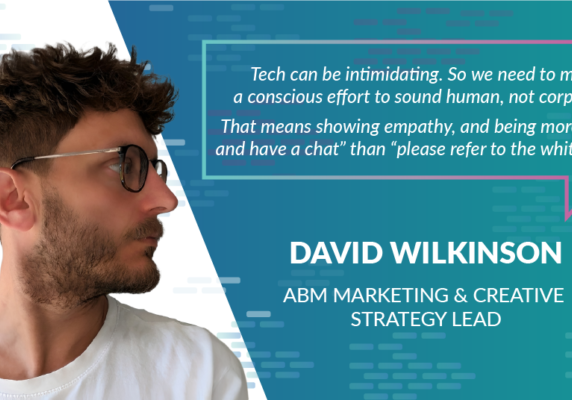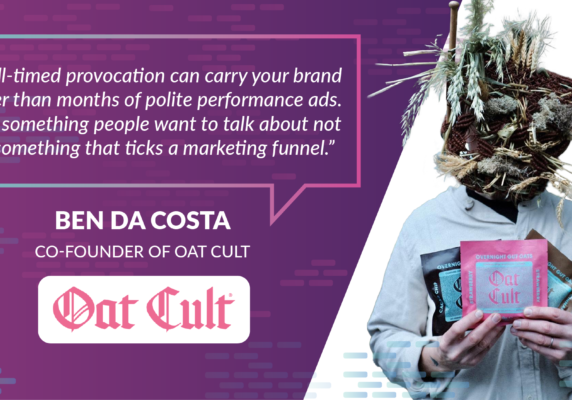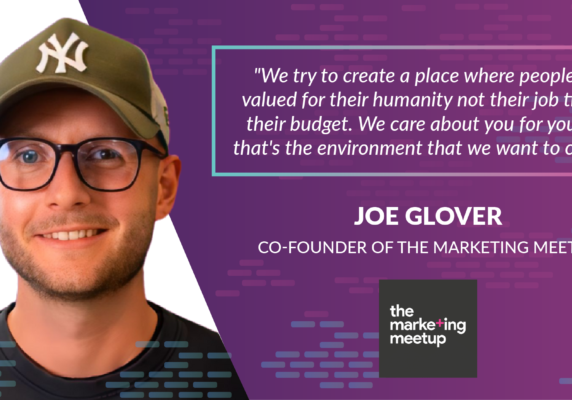B2B Marketing Expert Interview: Steven Grinberg, Marketing Director – Squirro
We catch up with Steven Grinberg – Marketing Director at Squirro, to talk about AI’s role within the marketing industry.
Steven – it’s a pleasure to speak with you and thank you for joining us for our Marketing Expert’s Interview.

AI has been around for a while – but thanks to digitisation and its enabling technologies, like the cloud – it has become more prevalent and useful across a diverse range of industries. Where do you see AI’s greatest benefit in marketing today?
It’s a really exciting time for marketers that have the opportunity to use some of the technologies available. We’ve already seen what can be done with AI for chat-bots, programmatic advertising, and sentiment analysis, to name just a few applications. Although those technologies will continue to improve, there’s so much more that’s just starting to emerge, and I believe it’s going to be game-changing. For example, AI-driven research and content recommendations.
“I see the greatest benefit of AI in marketing today being its empowerment of the marketer to harness the data available to them.”
Just think of the sheer amount of time that is dedicated to research in almost every aspect of marketing. For example, two continuously important subjects are understanding the customer and accurately segmenting them while also learning from the successes and failures of the competition. Successfully achieving this knowledge is dependent on huge amounts of data, which is constantly growing. Using AI can significantly reduce the time invested in doing these things on a consistent basis.
This is all to say that I see the greatest benefit of AI in marketing today being its empowerment of the marketer to harness the data available to them.
One of the startling points you raised in a write-up of your experience attending this year’s TechXLR8 conference in London – was visitor bewilderment upon learning that just 1% of data is used within business and marketing practices – with 99% left unstructured and underutilised. Could you tell us a bit more about this and the role AI can play in addressing the imbalance?
Absolutely! Structured data, that is, numeric data that can be easily processed by software, has had the spotlight for quite a while. There are some incredible tools available that crunch through enormous amounts of stock market data, consumer goods pricing data, even sports statistics, and so on. All of that is structured data and a majority of the business progress we’ve seen is based on it.
“From marketing to business development to customer acquisition and support, AI with unstructured data is going to be integral across the value chain moving forward.”
However, most people don’t realize that there is this other type of data, unstructured data. This includes emails, PDF and MS Word files, text data saved in CRM systems, news feeds, analyst reports, call transcripts, social media posts. The list is quite long and this unstructured data eclipses the structured data many folds not just in terms of amount of data, but also in terms of how much insight it can provide.
With AI, unstructured data can be integrated into some of the most important business functions. From marketing to business development to customer acquisition and support, AI with unstructured data is going to be integral across the value chain moving forward.
Which marketing methods do you use, to you ensure that your communications at Squirro paint a clear picture of how AI solutions benefit your customers?
We take a customer-first approach in all our marketing efforts. It’s important to us that we have a thorough understanding of the customer, where they are in their journey, and where they want to go next.
While it would be extremely convenient to know everything about the visitor and what they need the moment they come to our website, this is never the case. For this reason, we’ve architected the website to allow visitors to quickly and easily find the information that would benefit them the most.
“So much of the information comes from unstructured data sources. This then fuels our content development, account-based marketing (ABM) strategies, and social media management, to name a few.”
But even before that, our marketing R&D efforts require us to have a firm understanding of our existing and potential customers, the industries they belong to, and the overall market landscape. We’re fortunate in that we can use Squirro to constantly monitor most of this as so much of the information comes from unstructured data sources. This then fuels our content development, account-based marketing (ABM) strategies, and social media management, to name a few.
By taking this approach, we can demonstrate where and how our AI solutions can best serve our customers so that they can see an ROI as quickly as possible.
For those marketers who are either considering experimenting with AI, or have just started the process of doing so – do you have any advice where they should prioritise AI activities or tips for making an AI transition work more smoothly?
First and foremost, don’t let the associated complexity overwhelm you.
A good place to start is by identifying the current processes that you’d like to improve by applying an AI solution. Be as granular as possible rather than broad and make sure to have a strong understanding of the goals associated with the processes as well as the key performance indicators (KPIs) that goals are based on. Next, you’ll want to assess the data that is available to you. Consider internal and external data sources as well as structured and unstructured data types. Finally, you would look for AI solutions that can utilize these data sets and produce outputs that improve your KPIs and achieve the specific goals.
So, if the goal is to improve your content development strategy. You’d take into account the current process, which might involve reading through news articles, analyst reports, internal documentation, blog posts, and social media networks. This covers not only the process, but also the data that is being used for the job. You can then calculate the amount of time it takes to do this research as well as the performance of the content that is developed.
With this overview laid out, you’d be looking for something that can connect to all of these data sources, process the data, and provide you with outputs that streamlines your content research and development phases. You can then compare the time invested in researching and developing the content as well as the performance of the content before and after the solution was used.
AI has proven to be quite a polarising subject with nay-sayers concerned that jobs could be threatened and healthcare further restricted if the technology is given more prominence within insurance and financial industries. From your experience and proximity to the AI industry – do you share any of these concerns – or is this just a lot of AI fear-mongering?
There is definitely a whole lot of fear-mongering going on. This is, unfortunately, due to it producing clicks and views, which helps some companies meet their financial goals. But this isn’t to say that there’s absolutely no cause for concern. It’s important to understand that there’s more to the story than just AI; automation also plays a significant role here as do policy changes and economics – both domestically and internationally.
“There are two important things to remember. The first is that change is something we should always be prepared for. The second is that people will always need people.”
There are two important things to remember. The first is that change is something we should always be prepared for. The second is that people will always need people. If we were to imagine waking up tomorrow to a world where all for-profit businesses have been fully automated and are being managed by some fantastical AI. In this world people no longer have jobs and none of the benefits jobs currently provides. What would be the profit expectations of these organizations? Who is purchasing their products and services? Reaching this level of AI and automation would likely mean that society has evolved in such a way that allows for people to thrive in a world without jobs.
This leads me to believe we’ll be OK.
That said, it is important to understand the impact of implementing large-scale decisions. This is true in relation to using AI, automation or anything else. Considering AI in particular, there are some instances where it is nearly impossible to reveal how or why certain outputs were produced. This is called a black-box situation. Another important factor is the input data. In most cases, it requires very large amounts of data, but it needs to properly represent the subject matter. Having incorrect or imbalanced data could result in counterproductive output.
This is why Squirro shows you exactly how it came to the conclusions that it provides, allowing you to see, in context, the information that best suits your needs – no black-box approach. Furthermore, you can reinforce the findings to train the system on what better aligns to your business needs. This is a results-oriented way of using AI.
There will be changes that we all need to be prepared for, but if we maintain an honest, level headed, and considerate tone when discussing the capabilities of AI, we can develop an approach that has positive results at the personal level, the organizational level, and the global level.
Jordan Copplestone: I would just like to take this opportunity to thank you Steven for talking with me today – I am sure I speak for our readers when I say getting your take on AI and its benefits for marketing has been extremely interesting and insightful.






